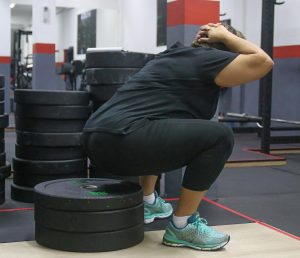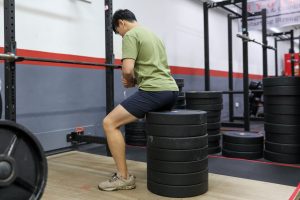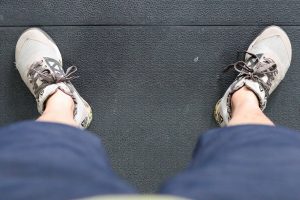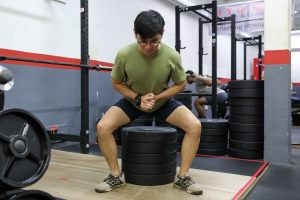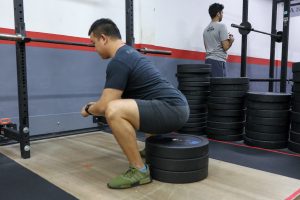If you’re able to squat to proper depth (hip crease below the top of your kneecap) with a barbell on your back, this article isn’t for you. If you’re able to do a bodyweight squat to depth, this article isn’t for you as well. However, if you’re unable to perform an unassisted bodyweight squat to depth, read on. If you’re still reading this, congratulations on making the decision to get stronger. Train consistently, progressively overload the resistance, be patient and I assure it will be one of the best decisions that you’ll ever make towards your health and quality of life. Every once in a while, we encounter clients that are unable to perform an unassisted bodyweight squat to depth. Almost 100% of the time, this is the result of a lack of strength. From our initial assessment of the client’s strength capabilities, our short-term goal is to get them strong enough so that they can do an unassisted bodyweight squat to depth. Here’s what you can do if you find yourself or see a loved one unable to perform an unassisted bodyweight squat to depth.
- Find a stable surface on which you’re able to squat down and stand back up without any assistance i.e. using your hands. We like doing box squats with bumper plates (fig. 1) because the height of the “box” can be easily titrated. If in doubt, be conservative and start a little higher and work your way down.
Fig. 1
- Stand with your feet shoulder width apart and externally rotate your feet about 30 degrees, pivoting from your heels (fig. 2).
Fig. 2
- From this position, lower yourself to the “box” by pushing your hips back and bending your knees while pushing them out at the same time (fig. 3).
Fig. 3
- Lower yourself under control till you gently contact the “box”. The moment you contact the “box”, immediately come back up by leading up from your hips till you’re fully upright and back at the start position. When you’re at the bottom of your squat, do not rest on the box. Imagine that there’s an egg on the “box” – you want to contact the egg, not crush it.
- Perform 3 sets of 5 reps.
- Repeat every one to two days, lower the height of the “box” each time.
- When you’ve gotten to the point whereby you’re squatting to proper depth, lower the height of the “box” slightly so that when you’re at proper depth, you’re not contacting the “box” (fig. 4). This time, you need to gauge where proper depth is without feedback from the “box”. The lowered “box” is there to catch you just in case you get too deep and find yourself unable to get back up.
Fig. 4
- Repeat step 7 for a few sessions till you’ve gotten the confidence to squat to proper depth unassisted and be able to stand back up. Once you’re confident that you don’t need the safety “box” at the bottom, remove it at your next session and do 3 sets of 5 reps.
Congratulations, you’re now able to perform an unassisted squat to depth. Now, go forth and gradually add load and enjoy the newfound strength that you’ve worked hard for.

